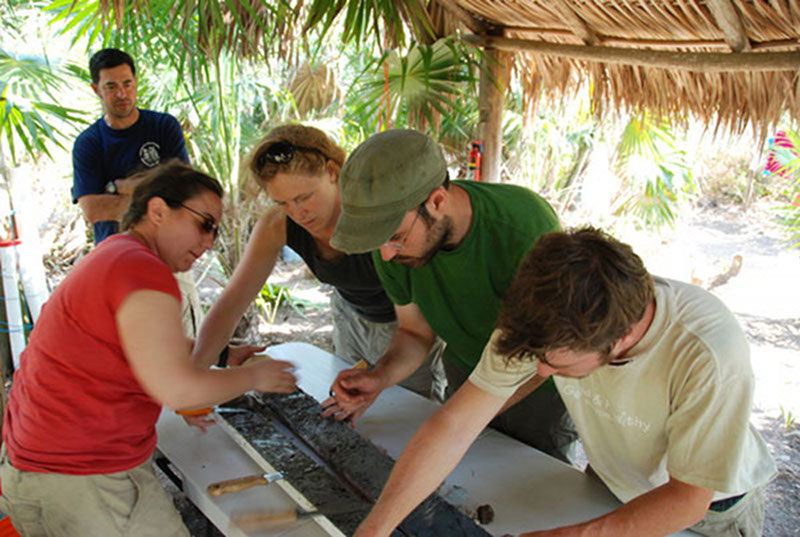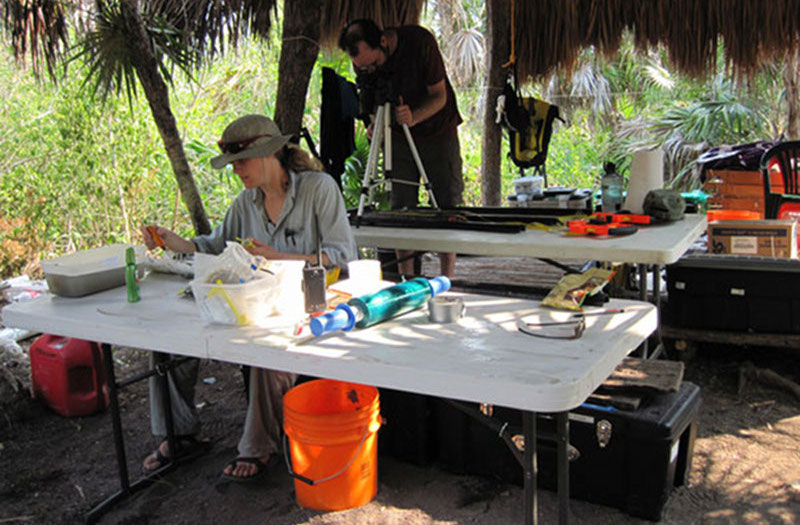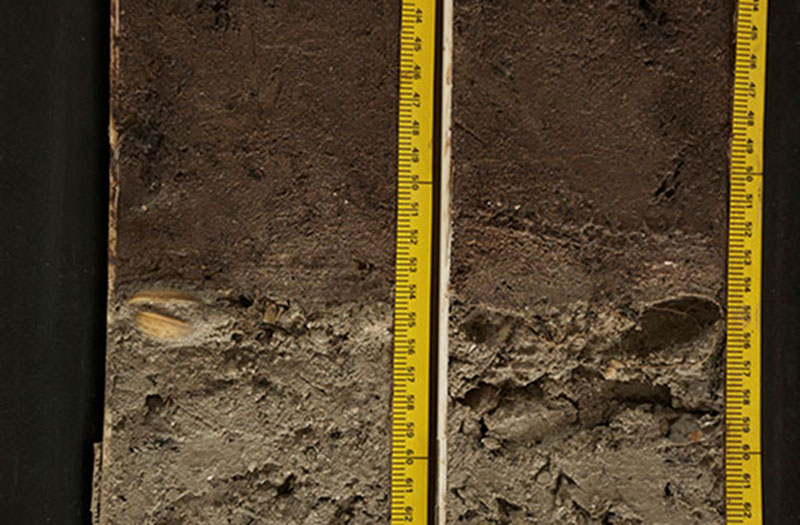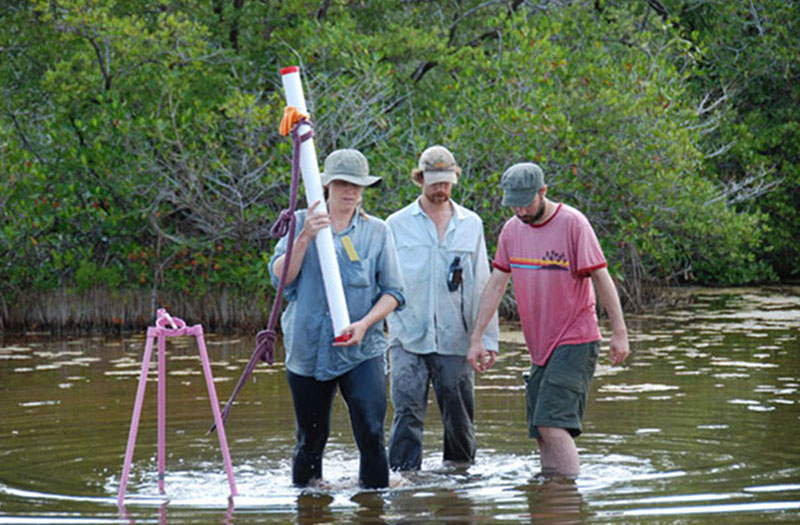
By Beverly Goodman, Assistant Professor, Leon Charney School of Marine Sciences - University of Haifa
October 5, 2011
It is very important to open a core in a careful manner. Ideally, it is done in a laboratory where things can be easily controlled. However, in our case we needed to open and sample the cores in the field for a few reasons. First, we needed to check if we were correct in our choice of coring locations. A correct collection would be recognized by variations in the sediments. In other words, we wanted to see that there has been some change in the environments surrounding the site, and that we were catching those variations. Those changes could represent natural changes due to sea level, hurricanes, or climate; or the changes could be anthropogenically induced (man-made) by alterations made to the coastline in the past. Anthropogenic changes—particularly changes that are created when harboring activities are present are of interest if found in the cores we collected.

The team works together to carefully open up one of the core collected at Vista Alegre. Cores were cut length-wise using a small circular saw and then carefully pried apart with tools to split the sample into two equal parts. Image courtesy of Proyecto Costa Escondida Maritime Maya 2011 Expedition, NOAA-OER. Download larger version (jpg, 3.2 MB).
The cores are opened by drawing even lines along the side of the core tube length-wise-dividing the core exactly in half. This is often called ‘splitting’ the core, because you have to equal halves of the same material. Once it is opened, the core is photographed and described in detail, using a measuring tape to standardize all the positions of different layers and changes that are visible in the core. The measuring tape is also important later for stitching the photos together to create one continuous photograph of the core. Once it is photographed and described, it is sampled. Different circumstances and research questions require different sampling resolution (the distance between samples). We chose to collect at 1-centimeter sampling resolution. Every sample is removed and placed in its own sample bag. It is a long process that normally takes about 3 minutes a sample, or three hours per meter! Fortunately we had a lot of hands to help.
Dr. Beverly Goodman discusses the coring project at Vista Alegre and the clues to the site's past that can be found when opening up a core. Video courtesy of Proyecto Costa Escondida Maritime Maya 2011 Expedition, NOAA-OER. Download (mp4, 51.9 MB).

Dr. Beverly Goodman samples a core in the field, while behind her Wes Patterson carefully photographs another core prior to sampling. Image courtesy of Proyecto Costa Escondida Maritime Maya 2011 Expedition, NOAA-OER. Download larger version (jpg, 7.1 MB).

A cross section of a core shows variations in the sediments captured in this particular core. There is a noticeable change in color of sediments, as well as a change in shell material present. Image courtesy of Proyecto Costa Escondida Maritime Maya 2011 Expedition, NOAA-OER. Download larger version (jpg, 3.9 MB).
After collecting in the bays around the site, which are important for understanding what the coastline of the site looked like while it was active, we moved into some key points of interest—a very shallow hypersaline flat, and a back lagoonal swamp immediately next to an ancient sacbe, or wall. Working in the shallow swamp, which we lovingly named the ‘death swamp’, was both exciting and exhausting. The water is so shallow that it gets very hot, and the salinity levels are incredibly high. All of our little scrapes and cuts became very painful! It was well worth the pain and suffering, one of our longest and most fascinating cores came from that effort. We hope that this core will help gives us a broader view of the climate and natural history of the site.

Beverly Goodman carefully carries a core obtained from a shallow, back lagoonal swamp near the site’s ancient sacbe. The hyper-saline waters and soft sediments often made it a challenge to walk through the area. Image courtesy of Proyecto Costa Escondida Maritime Maya 2011 Expedition, NOAA-OER. Download larger version (jpg, 3.6 MB).

Samples of the core are removed at 1-cm intervals using spoons, and packaged and labeled for further laboratory analysis. Image courtesy of Proyecto Costa Escondida Maritime Maya 2011 Expedition, NOAA-OER. Download larger version (jpg, 5.3 MB).
Once all of the cores are collected, described, and sampled, we’ll have to transport the likely over 100 pounds of marine dirt back to labs for analysis. One set of samples will go to Evanston, Illinois for Trish Beddows to work on at the labs at Northwestern University. Another matching set will fly across the Atlantic to the University of Haifa where additional detailed analysis will be completed to try to answer the project’s questions about ancient harbors at Vista Alegre.